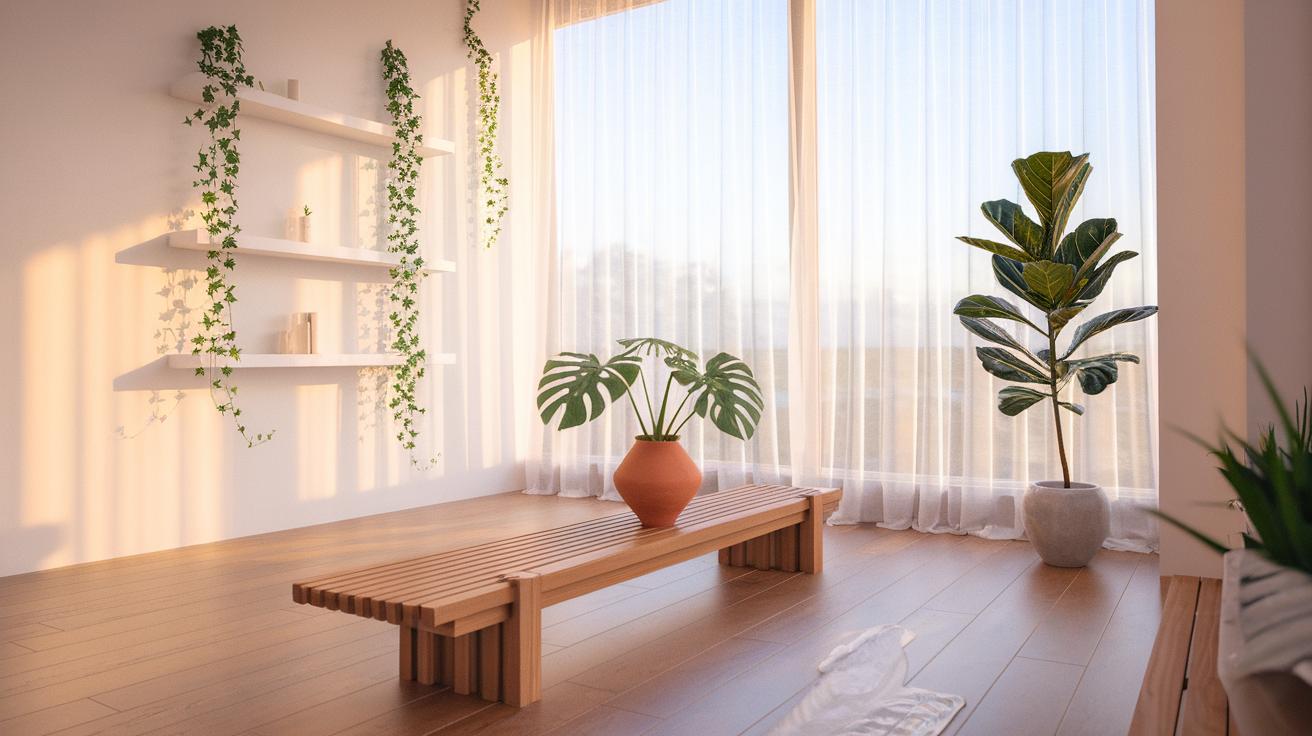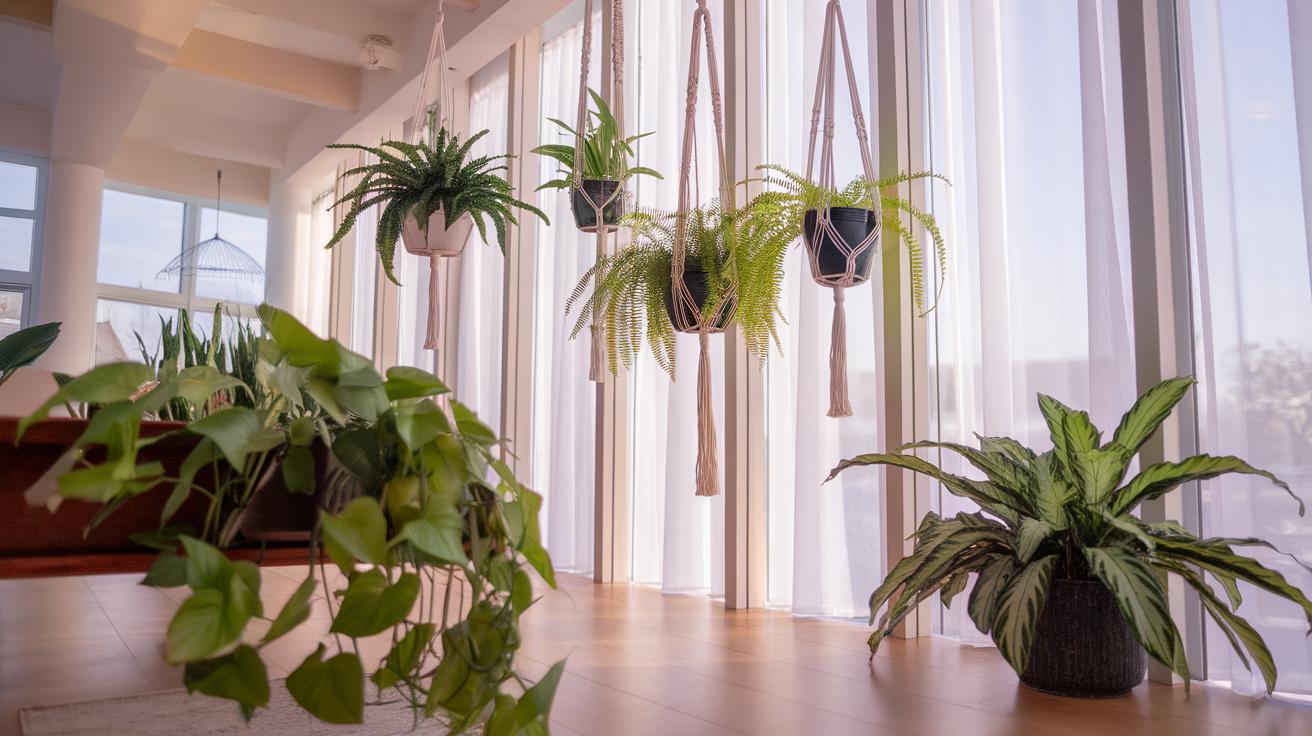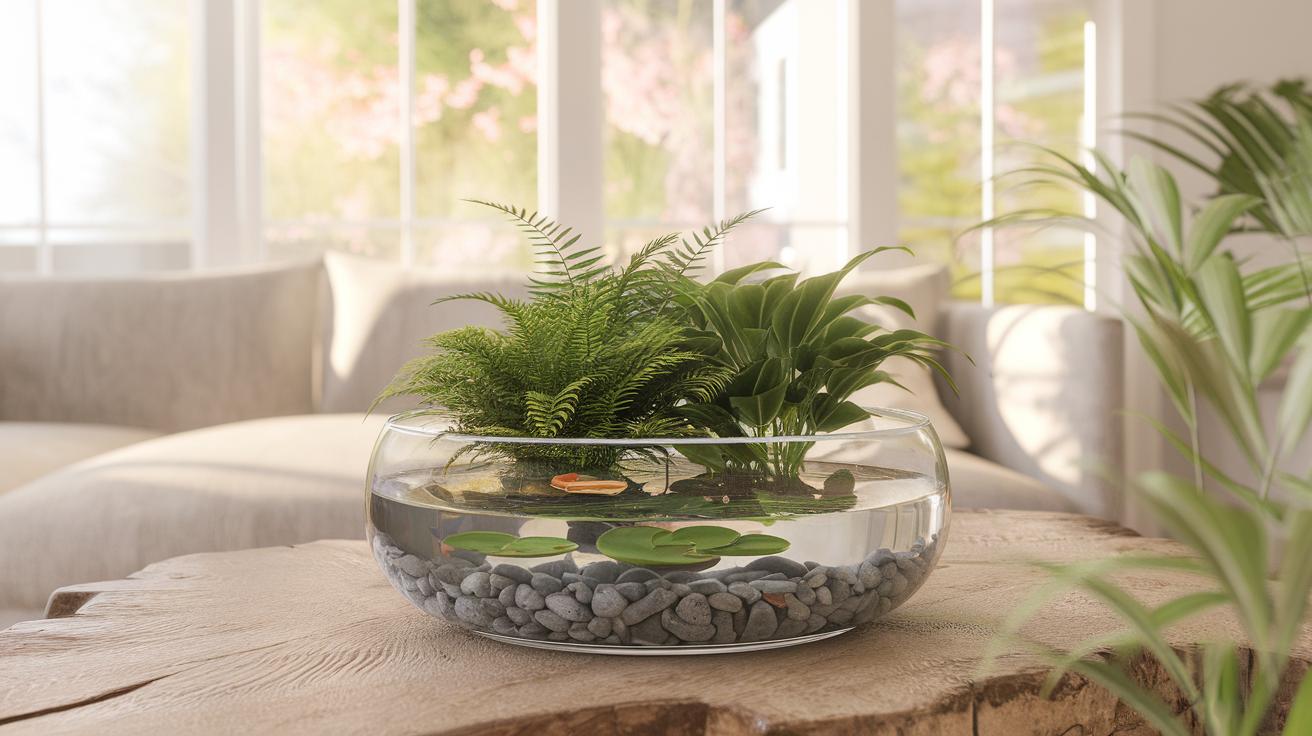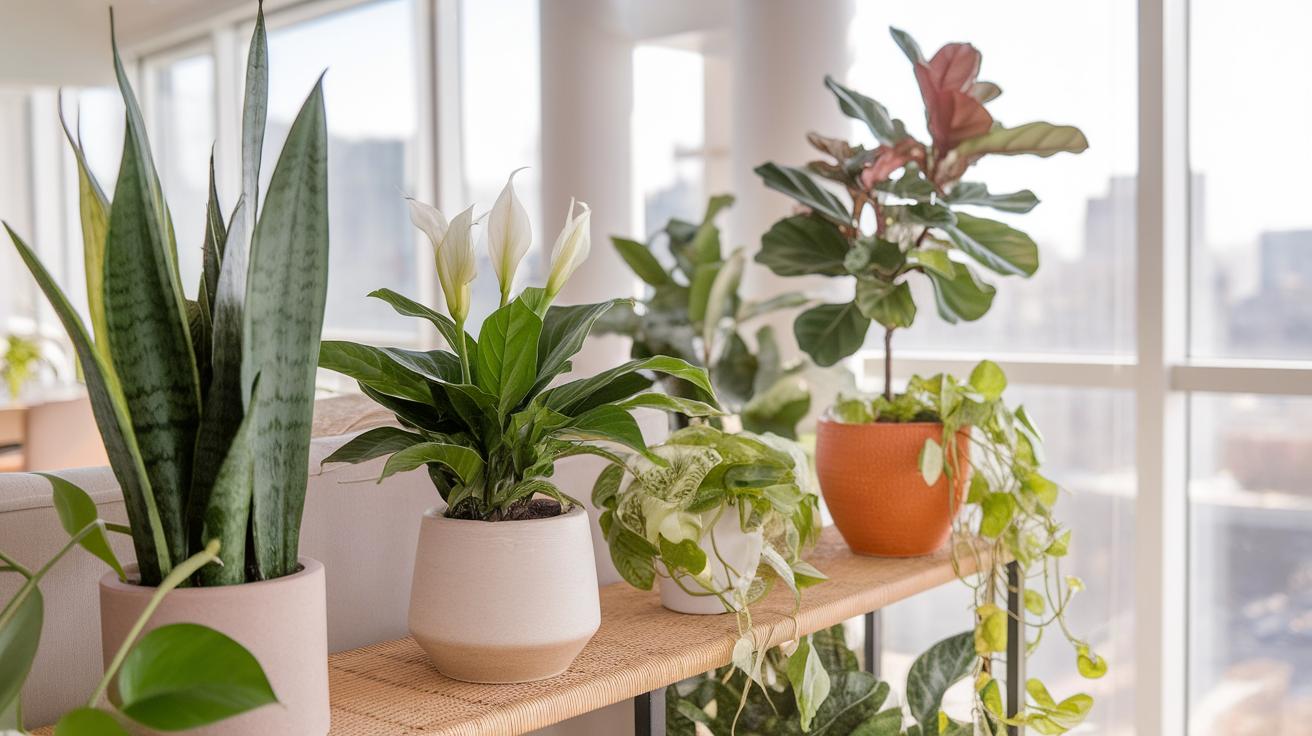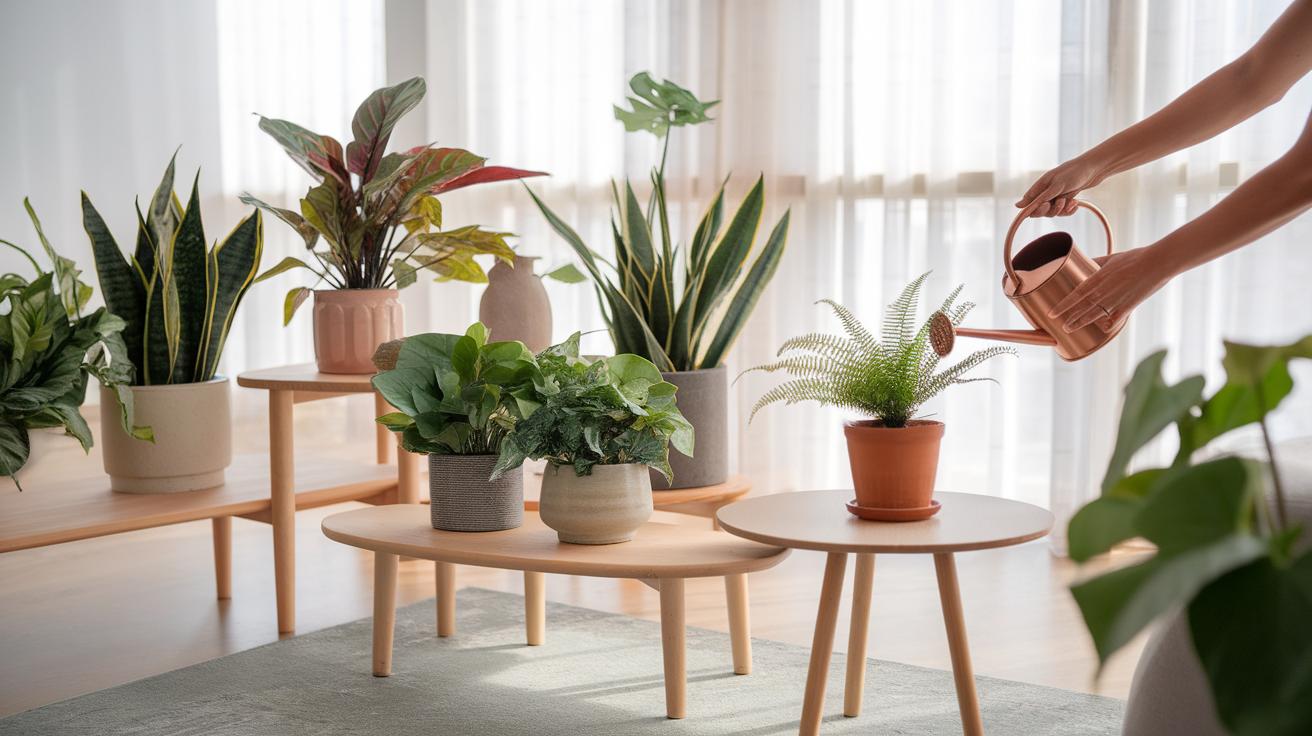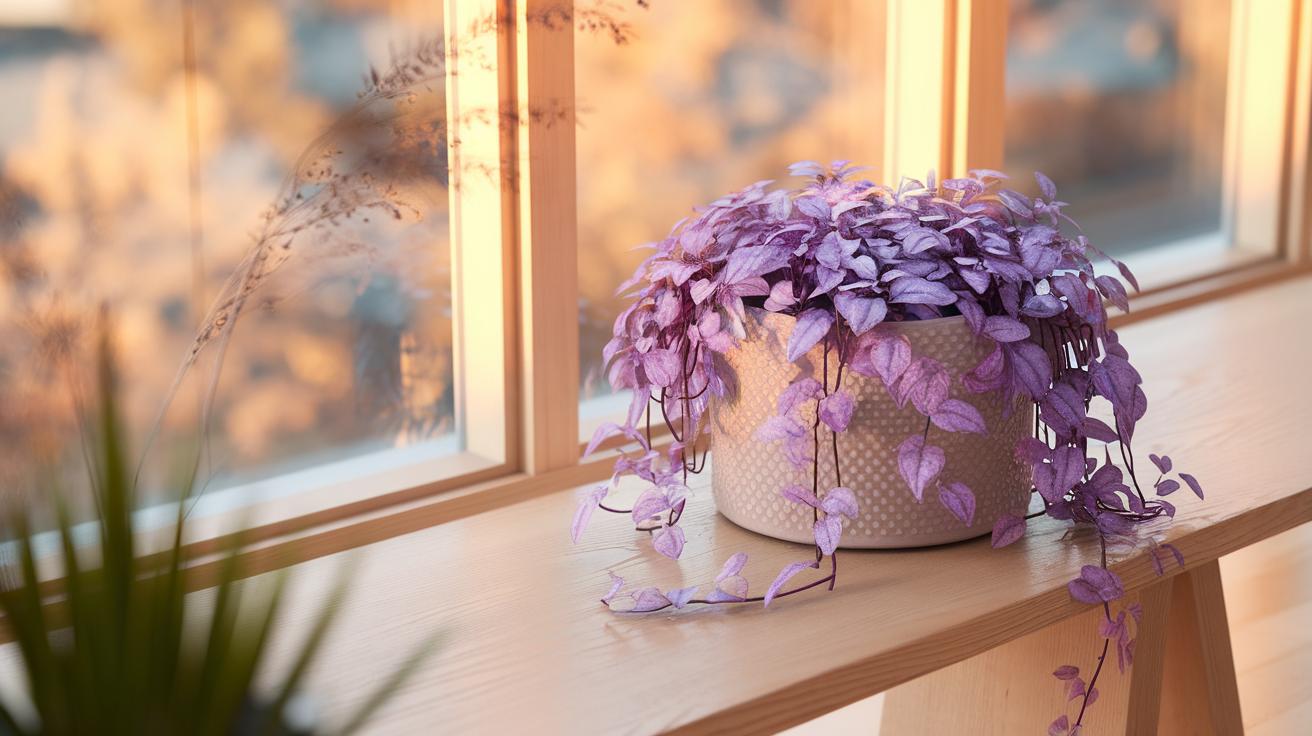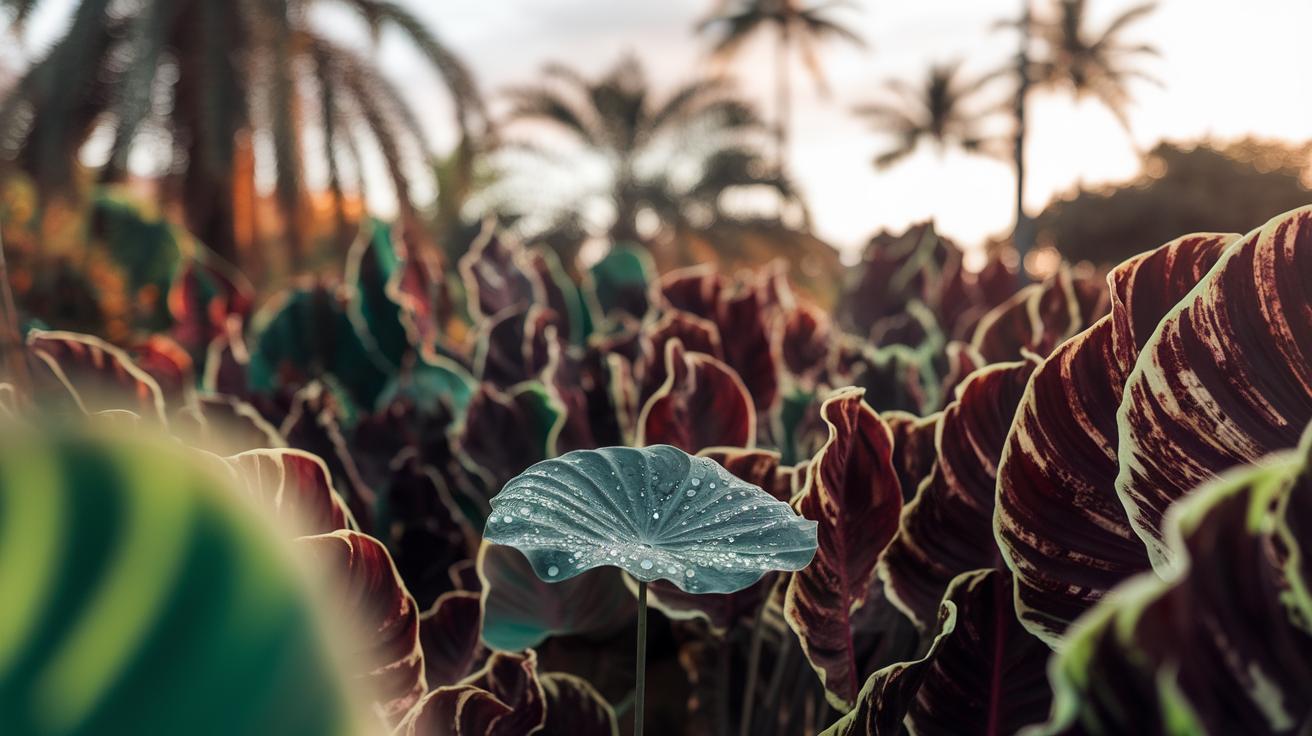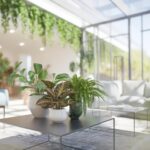Introduction
Indoor plants add more than just green touches to your home or office. These plants create a natural atmosphere and can improve air quality. Many indoor plants come from tropical or semi-tropical areas and thrive in warm, humid indoor conditions. Different types include epiphytes, succulents, and cacti, each with unique care needs. For your indoor plant display, choosing plants that match your space’s light and humidity will help them thrive and look their best. You benefit from knowing the right care including watering, fertilizing, and soil mix. The right plants and display style make your space feel lively and welcoming.
Creating a stunning indoor plant display involves smart arrangements and design ideas beyond placing pots randomly. Display styles can include shelves, hanging pots, terrariums, and plant walls. You can mix plant types to add texture and color contrast. Thinking about your room’s light and shape guides where and how to display plants for the biggest visual impact. For plant health and aesthetics, understanding plant care and placement is vital. This article guides you through effective indoor plant display ideas that will enhance your indoor space and inspire your creativity.
Choosing the Right Plants for Your Indoor Space
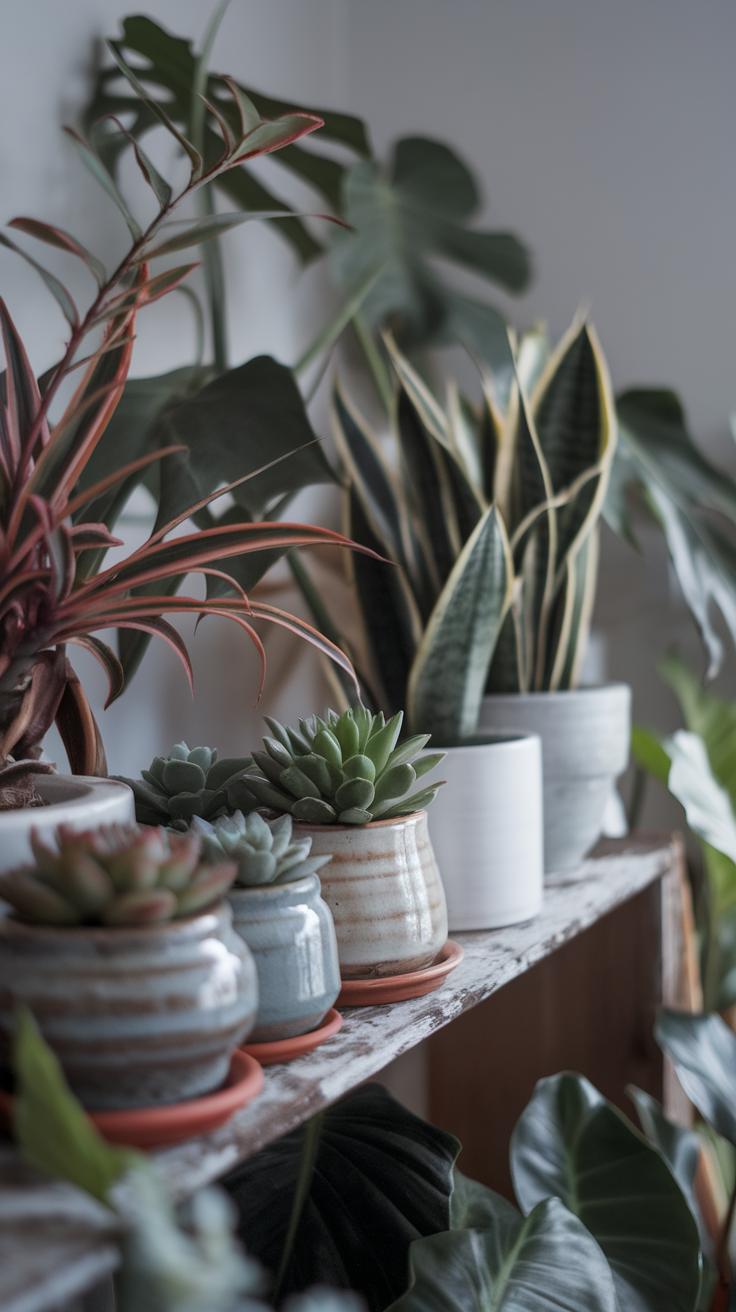
Choosing plants that match your indoor environment makes a huge difference in their health and appearance.
Light, temperature, and humidity affect how well a plant grows. Some plants need bright, direct sunlight, while others thrive in low light. Check the available light in your rooms before picking plants.
Tropical plants like Monstera and Philodendron enjoy warm, humid spaces. Succulents and cacti prefer dry air and bright light but need less water. Epiphytes such as orchids and air plants absorb moisture from the air and appreciate good air circulation.
Each plant category requires different care. Tropical plants need consistent moisture and higher humidity, so a bathroom or kitchen might work well. Succulents and cacti fit nicely in sunny windows where the air is drier. Epiphytes often thrive when placed on shelves or hung near windows.
Ask yourself: which rooms match the needs of your favorite plants? Picking the right plants avoids frustration and keeps your display looking fresh.
Understanding Light Requirements
Light impacts how plants make food through photosynthesis, affecting their growth. Different plants have different light needs, so understanding this helps you place them correctly.
Sun leaves develop on plants exposed to lots of light. They are usually smaller, thicker, and darker green. Shade leaves form in low light, appearing larger and thinner to capture more light.
Assess light by observing windows and how much direct sunlight or shade a spot receives during the day. South-facing windows provide the brightest light, while north-facing ones offer low light. East and west windows give moderate light levels.
Try moving a plant gradually to find its preferred spot. Notice if leaves turn yellow or stretch out – these signs show light isn’t right.
Matching Plants to Indoor Conditions
Temperature and humidity vary in different rooms. Many tropical plants like warm, humid spots around 65-80°F with 60% or higher humidity. Bathrooms and kitchens often fit this.
Succulents and cacti prefer cooler temperatures, around 50-70°F, with dry air. These plants tolerate drought and low humidity better than others.
For low light and cooler rooms, try snake plants and pothos. Both tolerate less light and dry air well. In bright rooms with dry air, succulents like aloe vera and jade thrive.
Does your living room have a cooler, drier climate while your bathroom is humid? Choose plants based on where they will live, not just what looks nice. Matching plants to room conditions helps you maintain them easily and display them beautifully.
Planning Your Indoor Plant Display Layout

Start by looking closely at the space where you want to arrange plants. Measure windows, shelves, and empty corners. Notice how much natural light the area receives throughout the day. This helps you decide what plants fit best and where to place them.
Think about height variations to add depth to your display. Group taller plants with shorter ones to avoid flat or boring arrangements. Mixing sizes creates a layered effect that draws the eye around the space.
Group plants based on their care needs and appearance for a balanced look. Clustering several small plants on a table or shelf can make a bigger visual impact than scattering them.
Ask yourself: How can I use different plant shapes and sizes to fill the space without crowding it? Planning your layout with these questions in mind will help you create a stunning display with lasting appeal.
Adapting to Available Space
Use every corner effectively. Shelves offer a great way to showcase multiple plants while saving floor space. Select sturdy shelves that hold different pot sizes and group plants for effect.
Windowsills provide bright spots for light-loving plants but limit plant size. Balance by pairing a few small pots rather than one big plant that blocks the window.
Corners can become focal points with a tall plant or a small cluster on a side table. Avoid overcrowding by leaving breathing room so plants don’t compete.
Maintain flow by arranging plants at varying distances. This prevents the display from feeling cluttered and lets each plant have its own presence.
Creating Visual Interest with Varied Heights
Varying plant heights adds dimension to your display. Place taller plants on the floor or sturdy stands. Smaller pots go well on shelves or tables.
Use plant stands or stack crates to elevate plants safely. Hanging pots add a vertical element that uses ceiling space smartly.
Mix pot sizes for contrast. A large leafy plant next to a group of small succulents grabs attention. You can also layer plants by placing a short one in front of a taller one to enhance depth.
Ask yourself: How can changing heights help my plant arrangement feel dynamic without feeling messy? Experiment with elevation to make your display stand out.
Using Containers and Pots to Enhance the Display
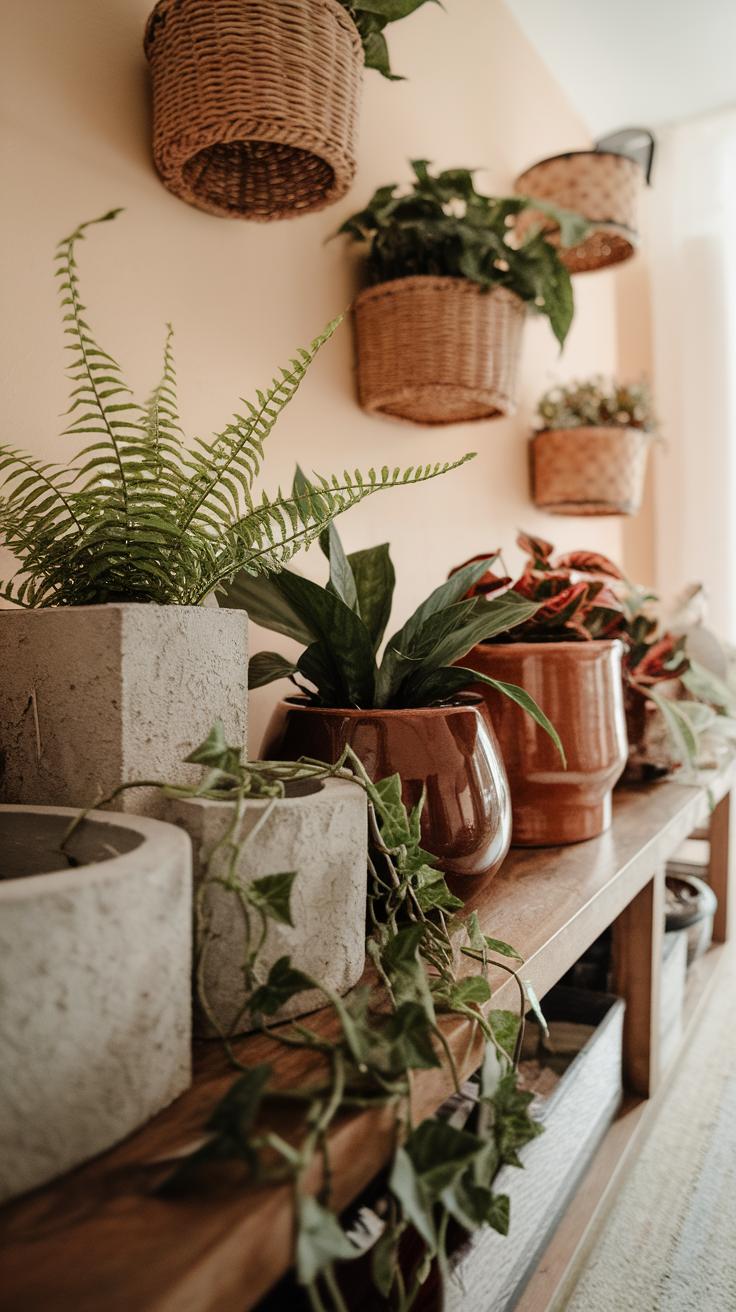
Your choice of pots and containers shapes the entire look of your indoor plant display. Materials like ceramic, terracotta, and plastic each bring different styles and moods to a room. Consider the color and finish too—matte black pots create a sleek vibe, while natural clay adds a warm, earthy touch.
Size matters to balance your plants visually. Small plants look lost in oversized pots, and large plants need enough room to grow without feeling cramped. Think about your plant’s future growth to avoid frequent repotting.
Drainage plays a vital role in plant health and display upkeep. Containers without drainage can cause water buildup, harming roots. Cache pots offer a stylish workaround by holding a pot with drainage inside a decorative outer container. They protect floors and allow excess water to escape from the inner pot.
What kind of containers match your style? How might your selections highlight your plants’ shapes and colors? Choosing wisely can turn simple greenery into a striking focal point.
Selecting Pots for Style and Function
Ceramic pots work well in modern and traditional spaces. Their smooth surface and variety of colors create a polished look. Terracotta pots suit rustic and natural decor with their porous texture that helps soil dry faster. They add character but dry out quicker, so you’ll water more often.
Plastic pots are lightweight and come in many shapes and colors. They fit casual or eclectic rooms and hold moisture longer, which suits some plants. However, they might look less refined and can fade over time.
Size your pots based on your plant’s root system. A small plant needs a pot that fits its current size but allows room to grow. Bigger pots suit plants with spreading roots but avoid huge containers that hold excess soil and risk overwatering.
Would your space benefit from neutral or colorful pots? Matching pots to your room’s style maintains balance while supporting your plant’s needs.
Ensuring Proper Drainage and Plant Health
Drainage holes keep excess water from pooling around roots. Without them, water can cause root rot and kill your plant. Always check if your pots have holes before planting.
If your decorative pot lacks drainage, use a cache pot. Place a drainage-hole pot inside it to catch water that leaks out. Empty the reservoir regularly to avoid soggy conditions.
Control watering by feeling the soil and adjusting based on plant type. Some plants prefer moist soil; others need it to dry between watering. Checking moisture helps prevent both overwatering and underwatering.
How do you monitor your plant’s water needs? Proper drainage and watering keep your display healthy and visually appealing for longer.
Incorporating Vertical Elements in Your Display
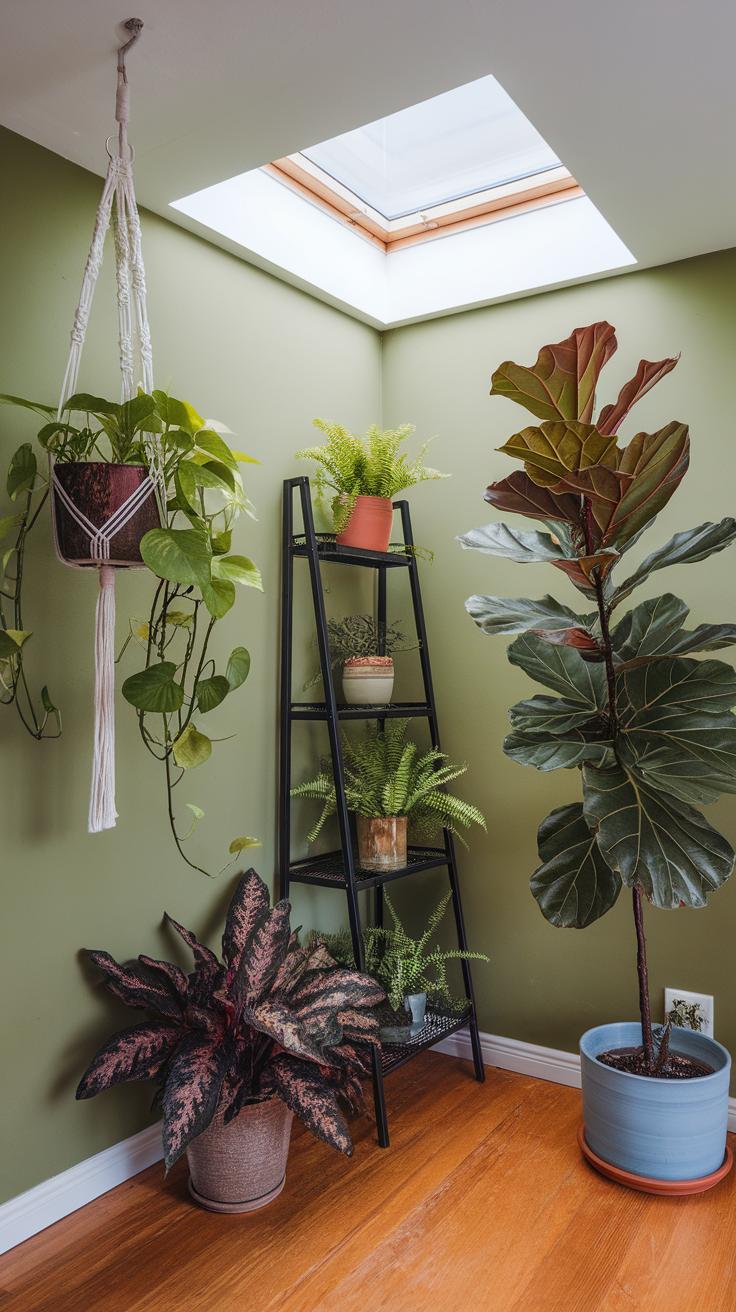
Vertical plant displays help you save floor space while adding layers and depth to your room. When floor space feels limited, going up opens new areas to showcase your plants. You can create a garden that climbs your walls instead of spreading across the floor.
Wall-mounted pots allow you to turn blank walls into green focal points. Whether you use individual pots or a collection of smaller containers, you can arrange plants at different heights for variety. Consider using modular wall planters to customize your display and easily swap plants.
Plant ladders provide an open, airy way to stack your plants vertically. They offer multiple levels to group plants by size, leaf shape, or color. Tiered shelves work similarly but with more surface area, perfect for trailing plants or larger pots.
Hanging gardens give the ceiling a role in your display. Choose hanging pots or macramé hangers to bring plants closer to eye level. A cluster of hanging plants in a corner can make a simple room feel dynamic and alive.
Think about the height and light each plant needs when designing your vertical space. How can you turn unused wall or ceiling areas into attractive, green features? Vertical ideas add excitement without crowding your walkways.
Wall Mounted and Hanging Displays
Wall-mounted displays offer many options, from single pots to planter grids. You can use metal brackets, wooden boards, or specialized wall pockets to hold your plants. Ensure the mounting hardware suits the weight of your pots and soil to keep plants secure.
Hanging pots come in many shapes and materials such as ceramic, glass, or lightweight plastic. Think about grouping several at varied heights for more interest. Using ceiling hooks, you can suspend pots safely, but check that ceiling anchors support the load.
Place plants that enjoy similar light levels near each other in your wall or hanging arrangements. Position trailing vines near edges so they can spill down attractively. When installing, use a level to keep pots straight and avoid overcrowding to allow airflow.
Do you have a wall that gets good light but stays unused? Transforming it with mounted or hanging plants can make your space feel fresh and vibrant instantly.
Using Plant Ladders and Shelves
Plant ladders and tiered shelves help you display many plants vertically while keeping each one visible. A ladder leans against the wall with several rungs that hold pots. Shelves stack horizontally but leave room between tiers for tall plants.
Arrange plants by size and texture to create layers. Place taller plants on top rungs or shelves, so they don’t block smaller ones below. Combine plants with contrasting leaves or colors to draw the eye across the display.
You can mix plant types, such as succulents, ferns, and trailing ivy, on ladders or shelves to add variety. Make sure each plant gets enough light by rotating them periodically. Adding small decorative items or plant stands can also enhance the tiers.
Have you thought about how much space each plant needs to grow on these vertical shelves? Planning for growth ensures your display stays neat and visually balanced over time.
Creating Focal Points With Large or Unique Plants
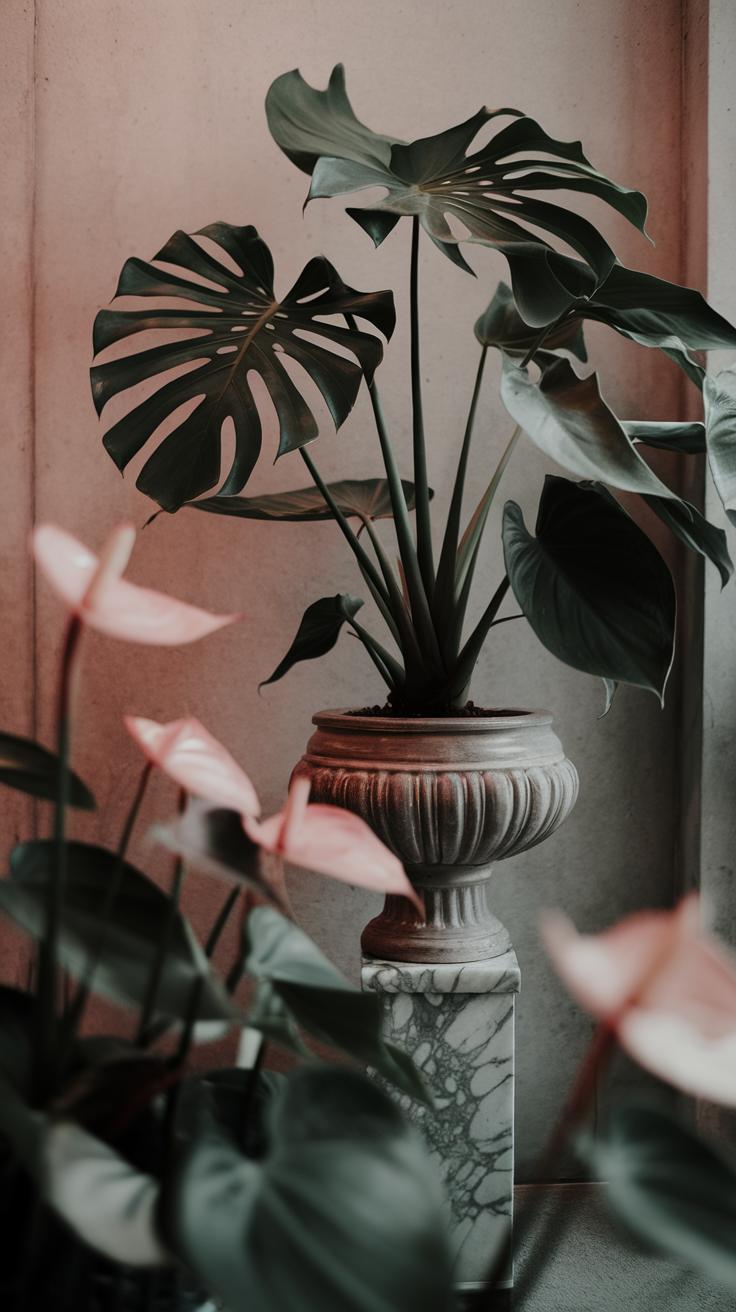
You can create strong focal points in any room by choosing large or visually striking plants. These plants naturally draw attention and set the tone for the entire space. Consider the size and shape of your chosen plant carefully. Place it where it catches the eye first, such as near an entryway, against a bare wall, or by a seating area. Positioning a bold plant in a corner can also soften harsh angles and make the room feel more inviting.
Balance matters when using large plants. If a single plant overwhelms the space, the room may feel uneven. Think about the scale of your furniture and other decor. Your focal plant should complement the room, not overpower it. Try moving the plant around and observe how the space flows. Does your eye rest comfortably on it, or does it compete with other elements? Experimentation helps you find the right spot for stunning visual impact.
Choosing Statement Plants
Choosing the right plant for a focal point means picking one with size, shape, or texture that stands out. Common large plants include fiddle leaf figs, monstera deliciosa, and bird of paradise. Each has a unique silhouette that commands attention. Snake plants and rubber plants also work well due to their bold leaves and upright growth.
Caring for bigger plants requires some planning. Many need strong, indirect light and occasional pruning to keep their shape. Larger pots mean more soil to manage, which can affect watering schedules. Some plants grow quickly and will need room to expand over time. Make sure you can provide the conditions and maintenance a statement plant demands before bringing it home.
Arranging Focal Points for Balance
After selecting your focal plant, arrange it to anchor the space visually. Place the large plant where it acts like a centerpiece but leaves room for other elements. That might be at the end of a sofa or beside a window where its leaves can shimmer in natural light.
Balance the focal point by surrounding it with smaller plants or decorative items like books, lamps, or sculptures. This contrast keeps the display interesting and prevents one spot from feeling too heavy. Try grouping three or five smaller plants near your focal plant to create a natural progression of sizes. Ask yourself if the arrangement invites your eye to move comfortably across the room without getting stuck in one corner.
Mixing Plant Types for Texture and Color Contrast
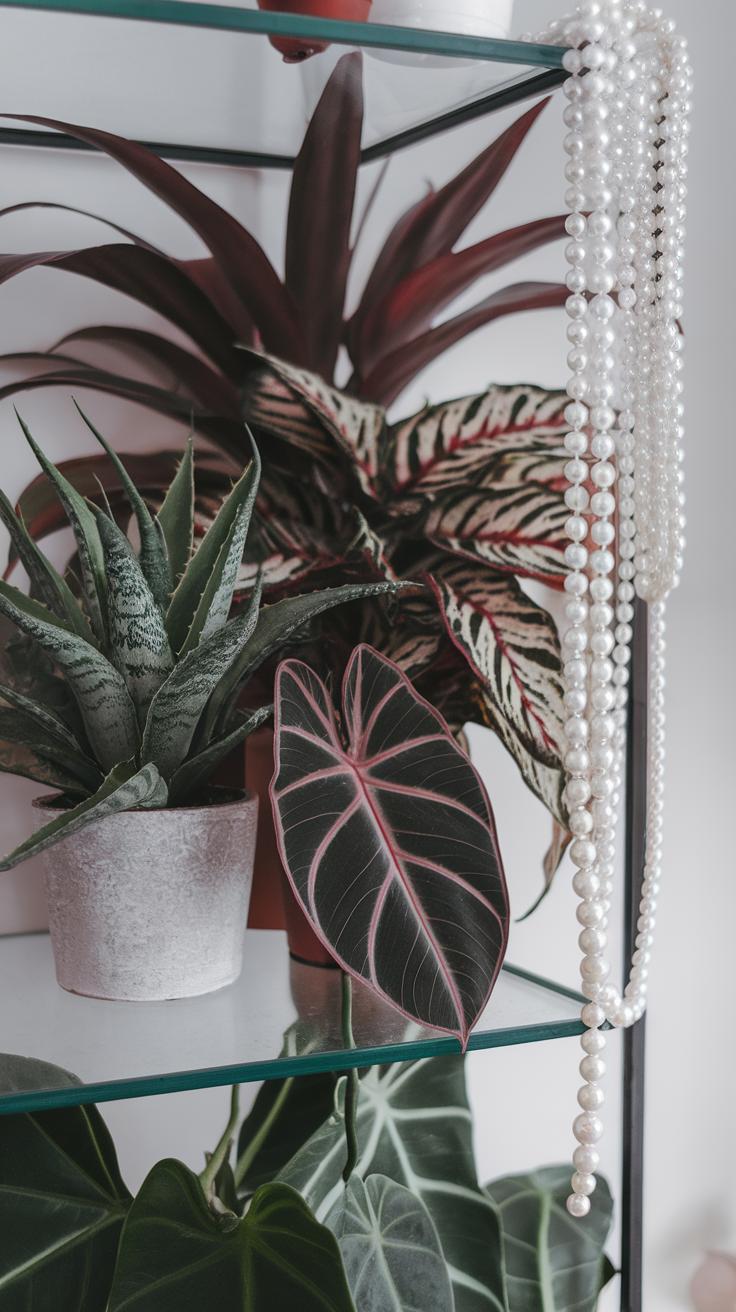
Combining different plant species brings depth to your indoor display. Choosing plants with varied leaf shapes and colors creates visual excitement that draws the eye. A mix of broad leaves, slender spikes, and delicate vines introduces complexity that keeps your arrangement interesting. Have you noticed how a single plant with uniform leaves can look flat or dull after a while? Adding contrast makes each plant stand out more.
Plants with different textures—such as smooth, waxy leaves next to fuzzy or rough foliage—work together to create balance. Color variations, like deep greens paired with lighter or variegated leaves, add layers to your display. The contrasts don’t compete; instead, they highlight the unique qualities of each plant. Think about how your eye naturally moves across a group of plants that show variety rather than sameness.
Mixing species also lets you experiment with how plants grow and hang. Some trail downward while others reach up or spread out. This variety keeps your display dynamic and engaging over time. What textures and colors are you curious to combine? Trying new pairs might surprise you with fresh appeal in your space.
Combining Leaf Shapes and Colors
Select plants with different leaf shapes to create visual rhythm in your display. Broad leaves like those on a Monstera catch attention with their size. Spiky leaves from a snake plant add vertical lines. Trailing vines such as pothos bring softness and movement that contrasts the stronger shapes.
Using leaf colors creatively means mixing solid greens with patterned or multicolored leaves. For example, a calathea with its striped leaves pairs well with deep green philodendrons. Bright yellow or reddish foliage offers a burst of color against green tones.
Consider how plants with shiny leaves look next to matte ones. This difference catches light in varying ways and adds interest. Does your collection include any plants with unique leaf details? Arranging them thoughtfully emphasizes their beauty and keeps your display from feeling one-dimensional.
Balancing Texture and Scale
Balancing texture means pairing smooth leaves with those that have rough or shaggy surfaces. Smooth-leaf plants like rubber trees provide calm spots. Textured plants such as ferns or calathea add complexity and softness. Mixing these textures prevents your display from looking boring or monotonous.
Scale matters too. Combine tall plants with small ones to create layers. A large plant can anchor a corner while smaller plants fill gaps around it. Grouping similar-sized plants tightly may create clutter or make your arrangement feel crowded.
When blending sizes, keep a sense of proportion and flow. Vary heights and widths gradually, rather than jumping from very tall to very small. What sizes do your plants come in? Experimenting with scale helps you find combinations that enhance your space without overwhelming it.
Maintaining Plant Health for LongLasting Displays
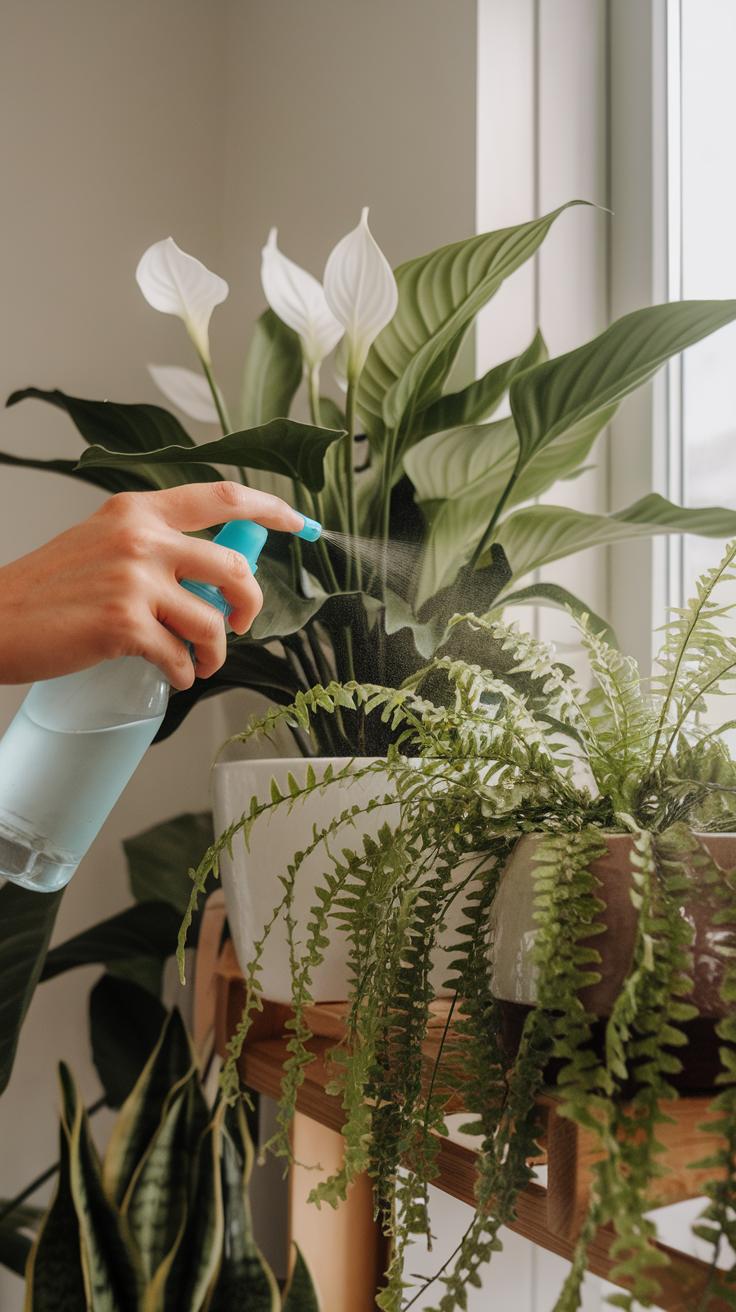
Your indoor plant display can lose its charm without proper care. Keeping plants healthy ensures your arrangement stays fresh and eye-catching. Understanding each plant’s needs makes a big difference. Water and light routines vary widely between species.
Proper watering prevents root rot or dryness. Overwatering kills roots faster than underwatering for most plants. Check the soil moisture before watering by sticking your finger about an inch deep. If it feels dry, it’s time to water.
Fertilizers provide the nutrients your plants need to thrive. Use a balanced indoor plant fertilizer, following the instructions carefully. Applying too much or at the wrong time can harm plants. Feeding once a month during the growing season usually works well.
Watering and Fertilizing Basics
Different plants require water on different schedules. Succulents and cacti like their soil dry between waterings, often every two to three weeks. Ferns and tropical plants enjoy consistently moist soil, needing water once or twice a week.
Water quality matters too. Using room temperature, filtered, or rainwater can reduce mineral buildup that harms roots. Always water at the soil level, not the leaves, to limit fungal growth.
Feed your plants with diluted, water-soluble fertilizer. Apply it directly to the soil, avoiding contact with leaves to prevent burns. Pause feeding in winter months when most indoor plants rest.
Humidity and Pest Management
Most houseplants prefer humidity between 40% and 60%. Dry air can cause browning edges or slow growth. Use a humidifier, mist plants regularly, or place water trays nearby to raise humidity.
Pests like spider mites, aphids, and fungus gnats can spoil your display quickly. Check leaves and soil often for tiny webs, sticky residue, or small bugs.
Catch infestations early by wiping leaves with a damp cloth or spraying with a mix of water and mild dish soap. Neem oil is a safe natural option that kills pests and prevents their return without harming your plants.
Have you noticed how small changes in care improve your plants’ appearance? The effort you invest pays off in longer-lasting, healthier displays that brighten your space every day.
Creative Display Ideas Using Terrariums and Mini Gardens
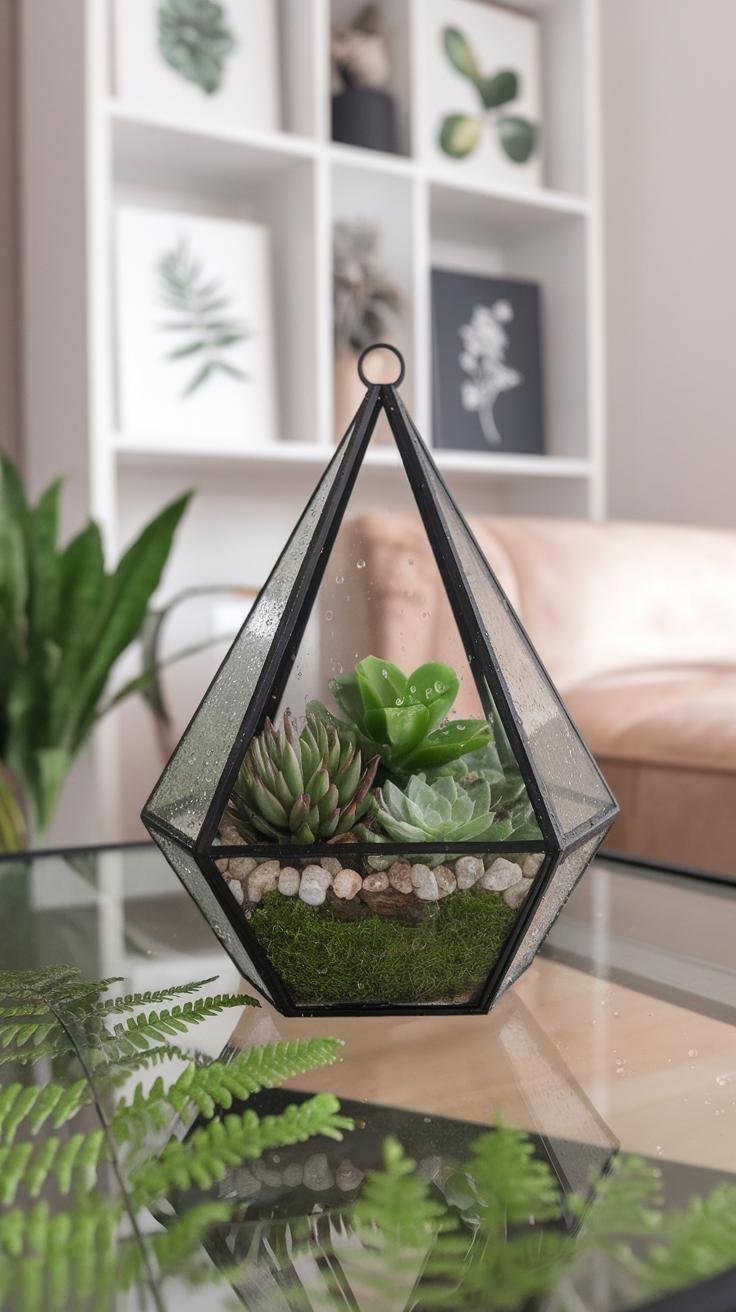
Terrariums and mini gardens offer a stylish way to showcase plants in small spaces. They bring the beauty of nature indoors without taking up much room. Creating a terrarium combines science and art, giving you control over a self-contained ecosystem. Mini gardens provide a chance to group plants for visual contrast and texture.
Building your terrarium starts with layers that support plant health and drainage. You can use glass containers, open or closed, depending on the plants you select. Adding decorative elements like stones or moss makes the display personal and unique. These compact green spaces fit on desks, shelves, or countertops, adding fresh life to corners that might otherwise go unnoticed.
Are you willing to try a plant display that fits your lifestyle and space? Terrariums and mini gardens make it simple to create eye-catching indoor features that invite you to care and observe.
Building a Terrarium
Create a drainage layer first, using small pebbles or gravel, to prevent water from pooling at the roots. Next, spread a thin layer of activated charcoal. This keeps the environment fresh by absorbing odors and toxins.
Add potting soil suited for your chosen plants, making sure it’s enough for roots to develop. Layering like this controls moisture and airflow, crucial to healthy growth. Place your plants gently in the soil, arranging them thoughtfully to avoid overcrowding.
Finally, decorate with items that support the theme or your personal taste—tiny figurines, colored stones, or natural moss. Mist the plants lightly after assembly to settle the environment.
Choosing Plants for Mini Gardens
Select plants that stay small or grow slowly to maintain a tidy display. Succulents, air plants, and ferns thrive in terrariums. For mini gardens, consider herbs like thyme or small tropical plants like fittonia. These plants enjoy humid, confined spaces but require less frequent watering than typical pots.
Since airflow is limited, avoid plants that suffer from excess moisture or need full sun. Monitor your mini garden more closely; condensation or mold signals adjustments in watering or light.
How might your indoor space change with a mini garden’s presence? Choosing suitable plants ensures your creation remains healthy and striking, inviting you to build more creative displays over time.
Adapting Your Display Over Time
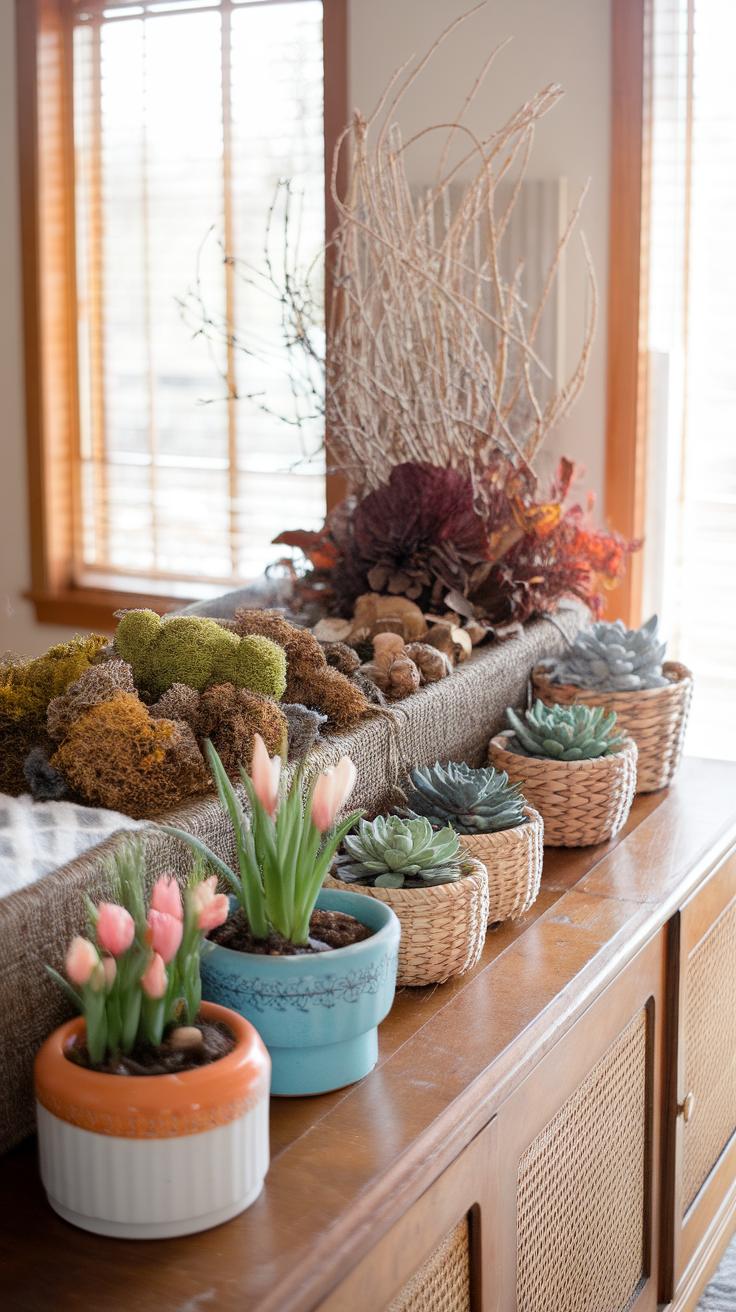
Your indoor plant display should grow and change just like the plants themselves. As plants mature, their size, shape, and needs shift. Adjusting your arrangement helps keep your space balanced and vibrant.
Consider how light shifts in your home throughout the year. Southern-facing windows provide strong sun in winter but softer light in summer. Moving plants to spots with the right light ensures they stay healthy.
Rotating your plants regularly prevents uneven growth and sun damage. It also gives each plant a chance to enjoy fresh air and light exposure. Changing the display by swapping pots or adding new elements refreshes the look and keeps it interesting.
Ask yourself how your current setup fits the growing plants. Could they benefit from more space or a brighter corner? Taking time to refresh might revive both your plants and your room’s feel.
Rearranging for Growth and Light Changes
Taller plants may soon block light from smaller ones. Shift them to different shelves or corners based on their size as they mature. This avoids crowding and supports healthy leaves.
Seasonal light changes affect how much sunlight your plants receive. Check them weekly to spot signs of stretching or fading, clues they need rearranging.
Leaf drop or slow growth could point to poor light or cramped roots. Moving a plant closer to a window or giving it fresh soil can make a big difference.
How often do you think through your plants’ light needs? Make it a habit to step back, observe, and tweak their placement with the seasons.
Seasonal Refresh and Plant Rotation
Bringing in new plants each season adds fresh colors and shapes. Try flowering plants in spring or compact succulents in winter to match the mood of your home.
Switching pots, stones, or decorative trays updates your display without extra plants. These small changes can highlight your greenery beautifully.
Rotate plants to improve air circulation and equalize sunlight. This prevents weak spots and keeps your display lively.
Consider how plant rotation also reduces pest buildup and encourages more even growth. Could you schedule a monthly or seasonal rotation with your current setup?
Conclusions
Indoor plant displays can transform plain indoor areas into vibrant, lively spaces. Using varied plant types, attention to lighting and humidity, and creative arrangement ideas helps you craft appealing visuals. Caring for your plants ensures they stay healthy and continue contributing beauty to your space. Experimenting with shelves, hanging pots, and terrariums provides diverse display options. Planning the arrangement considering your room’s conditions leads to optimal plant growth and visual balance. Your green display will enhance your environment and provide personal satisfaction.
You can start simple and evolve your indoor plant display over time. Ask yourself how your space can better reflect your style and accommodate your plants’ needs. Thoughtful choices in plant selection and placement give a unique touch to your home or office. The principles shared here offer practical guidance for your indoor planting projects. Your efforts reward you with enhanced space aesthetics and the benefits of nature indoors. Enjoy building an indoor plant display that brings calm and beauty to your everyday life.


